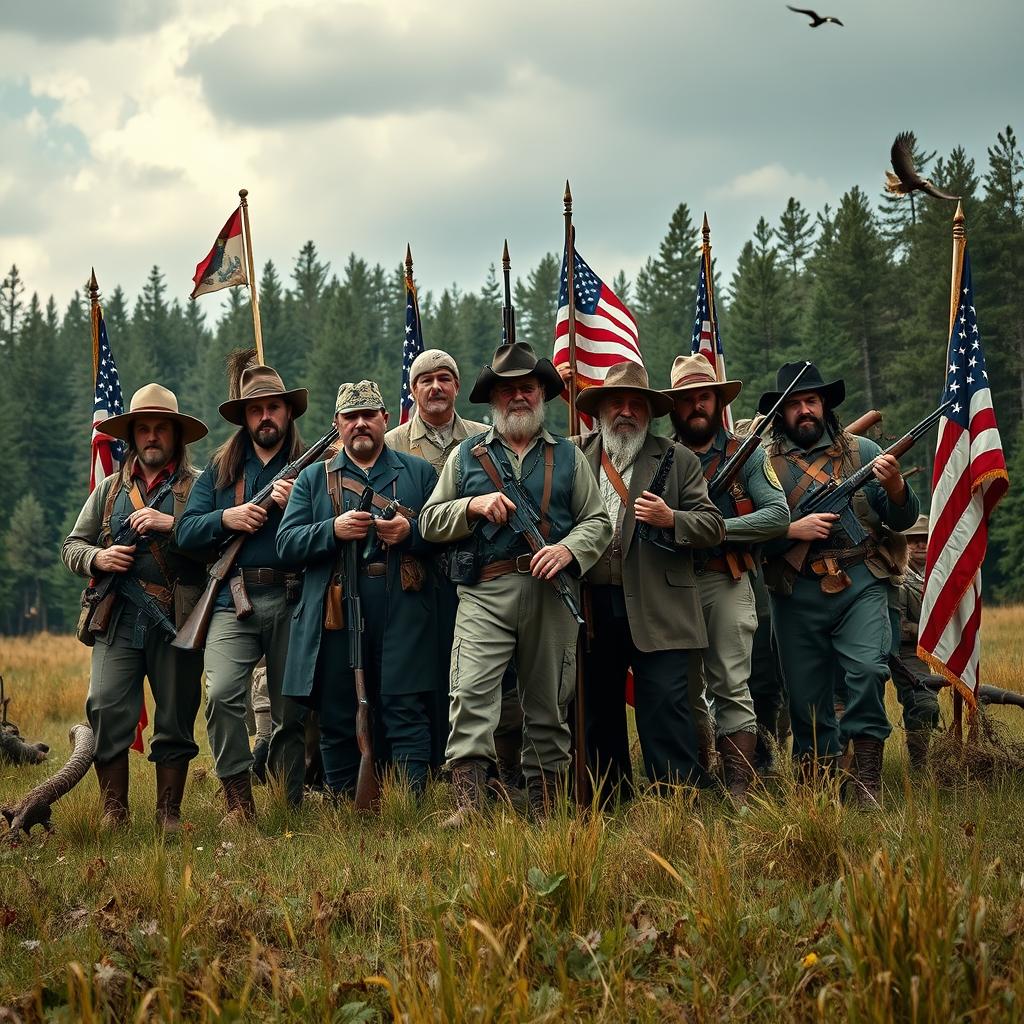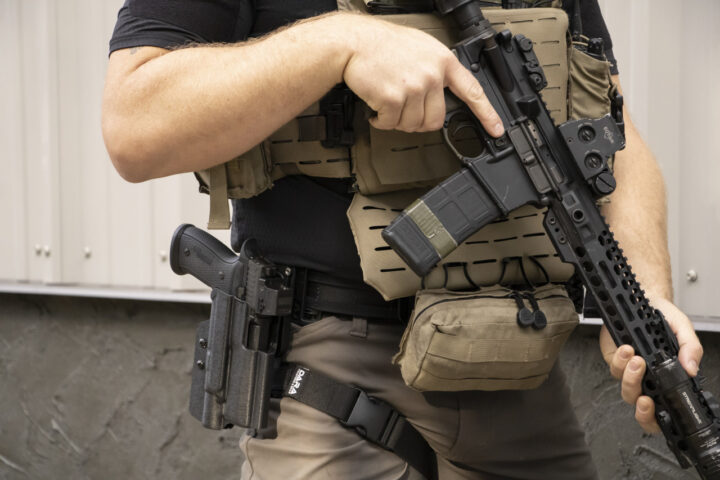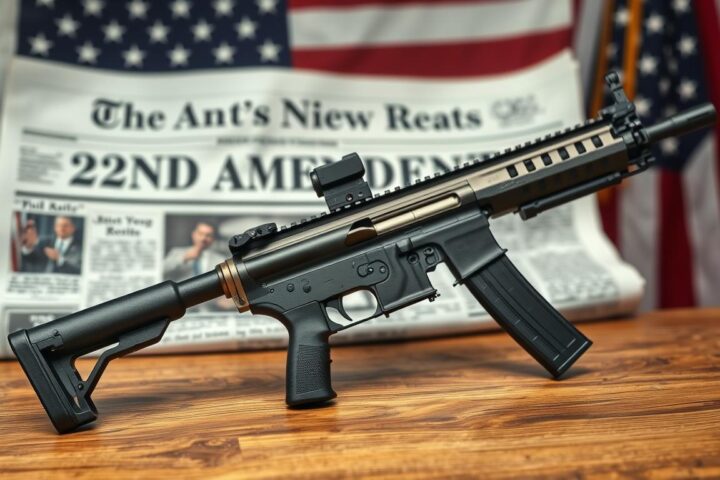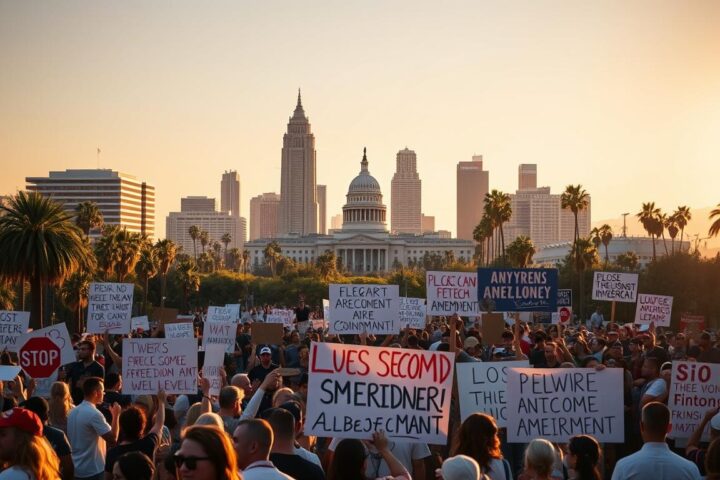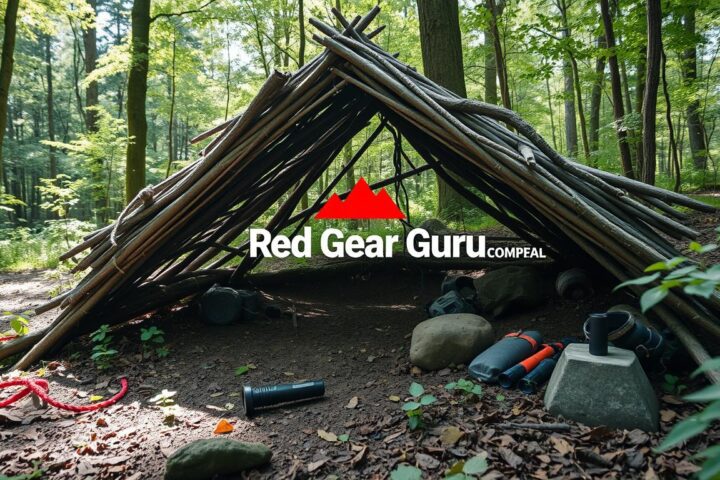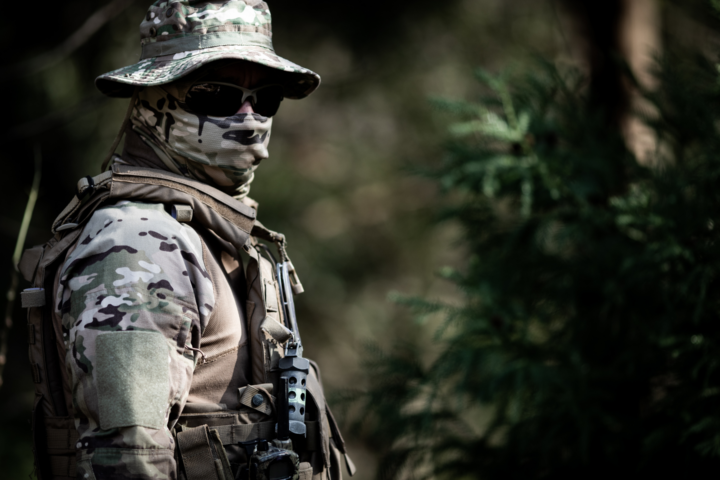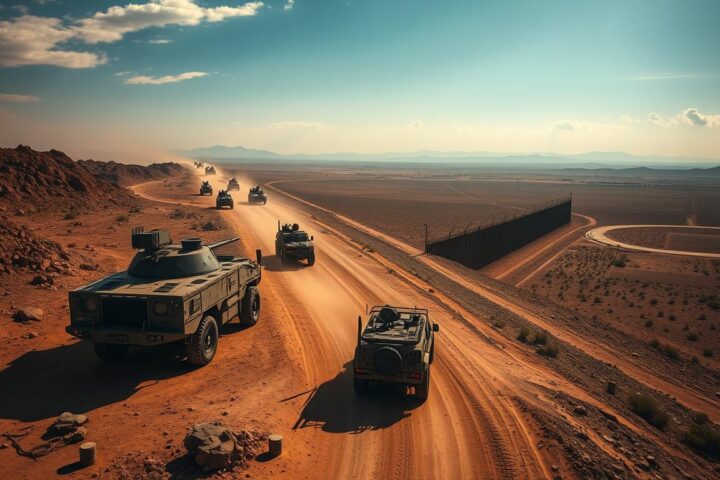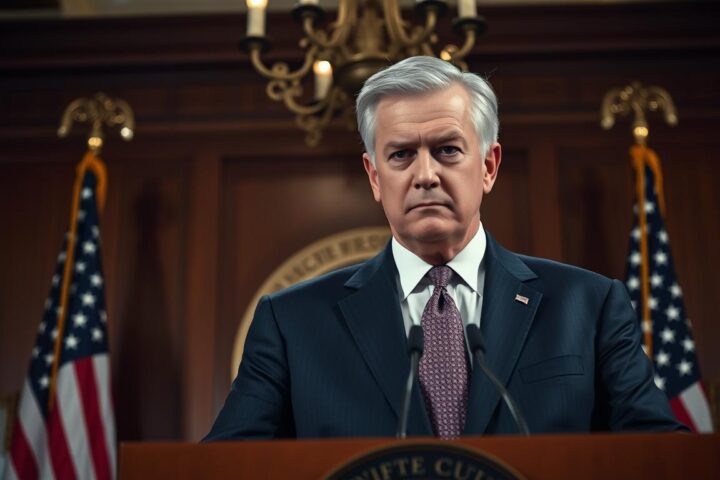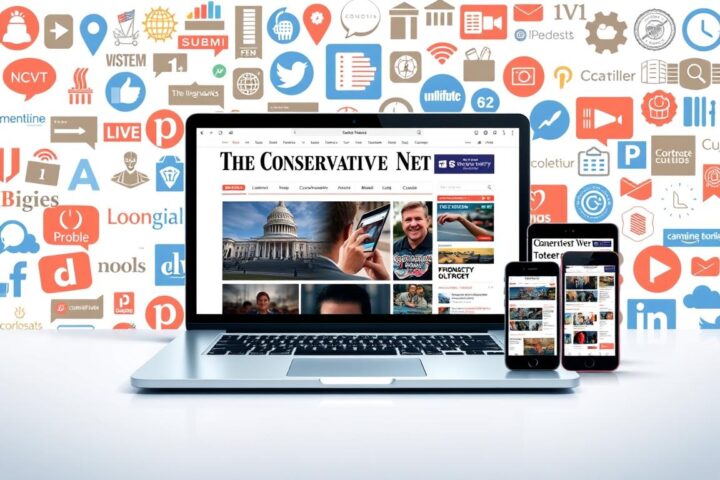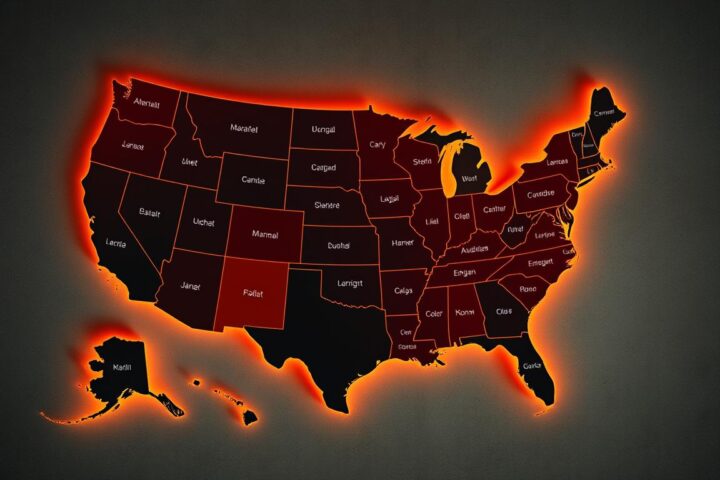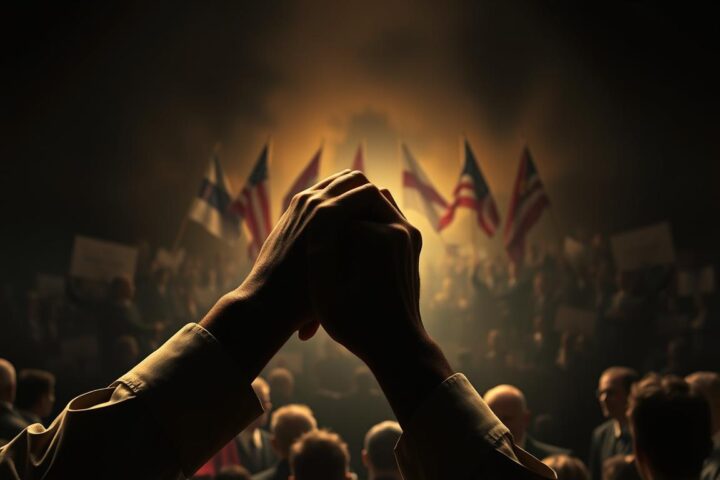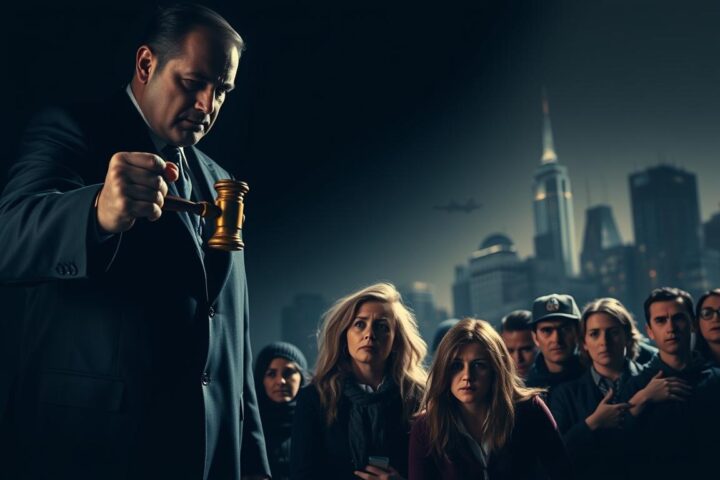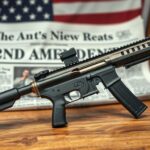Did you know that about 40% of American adults own a gun? This shows how deeply guns are tied to American identity. It leads to a complex talk about the Second Amendment and its meaning. Militias are becoming more important in the gun rights debate. It’s key to know their history and what they stand for today.
Militias today have many views and actions. They talk about defending themselves, being civil, and understanding the Second Amendment. Looking at big Supreme Court cases like District of Columbia v. Heller and McDonald v. City of Chicago shows how gun laws have changed. It also shows militias’ role in this changing world.
Key Takeaways
- The Second Amendment’s ratification in 1791 highlights the constitutional foundation for militias and gun rights.
- Militias are often seen as key to stopping government abuse.
- Supreme Court decisions greatly affect how we see gun laws and militia rights.
- Gun laws vary by state, which affects militias differently.
- People’s views on militias are mixed, showing how society feels about guns.
- Today, militias often work on keeping communities safe.
Introduction to the Militia Movement
The militia movement is growing in the United States. It’s fueled by grassroots activism and a focus on self-defense. People join militias because they believe in constitutional rights and the Second Amendment.
These groups see themselves as protectors of these rights. They react to what they see as government overreach, like gun control laws.
The Oklahoma City bombing in 1995 highlighted the extreme views in some militias. Timothy McVeigh’s actions showed fears of government conspiracies to disarm Americans. This led to a national protest against what many saw as a disarmament plot.
Many people think militias are dangerous, with 80% seeing them as threats. This fear comes from their radical views on self-defense and constitutional rights. To learn more, check out this link.
Historical Context of Militias in America
The idea of militias in America started in colonial times. These colonial militias were groups of people defending their communities. They showed the civic duty of protecting homes and families.
After the American Revolution, militias became even more important. They were seen as a key defense against tyranny. This showed the values of the people.
Documents like the Pennsylvania Declaration of Rights of 1776 talked about the right to bear arms. They warned against the dangers of standing armies in peace. Massachusetts’s Declaration of Rights from 1780 also highlighted the people’s role in maintaining a militia.
During the Constitution ratification, Anti-Federalists worried about a strong military. They wanted a constitutional amendment to protect gun rights. This led to the Second Amendment in 1789, ensuring the right to bear arms.
The Second Amendment and Its Implications
The Second Amendment was ratified on December 15, 1791. It states that people have the right to keep and bear arms. This right is a key part of American constitutional rights.
There’s a big debate about what this means. Some think it’s about individual rights, while others believe it’s about collective rights. The English Bill of Rights from 1689 allowed Protestant citizens to bear arms for defense. This helped shape how Americans view gun ownership today.
In 2008, the Supreme Court made a big decision in District of Columbia v. Heller. They said the Second Amendment protects an individual’s right to have handguns for self-defense at home. This ruling showed that while the right to bear arms is important, it’s not unlimited.
Certain laws are okay, like keeping guns away from dangerous people and in sensitive places. This shows a balance between protecting rights and making laws.
In 2010, the McDonald v. City of Chicago case made another big change. It said the Second Amendment applies to state and local laws too. This decision made it clear that the right to bear arms doesn’t mean you can have any weapon for any reason.
Gun violence is a big problem in America, causing about 40,000 deaths each year. Groups like the Giffords Law Center want to pass smart gun laws. They believe these laws can work with the Second Amendment.
There’s still a lot of work to do in figuring out how to balance rights with safety. Courts keep saying that many gun laws are okay. This shows how important it is to find a balance between protecting rights and keeping communities safe.
Militias as Safeguards Against Tyranny
Militias have always been a defense against political tyranny. They show the belief in the right to resist government overreach. This idea comes from America’s Founding Fathers, who worried about centralized power taking away individual freedoms.
The idea of a well-armed people is linked to self-defense. Communities come together to protect their rights and safety during unrest.
Studies show Americans use guns to defend themselves between 500,000 and 3 million times a year. Those who fight back tend to suffer less harm than those who don’t. This is seen today in Ukraine, where civilians armed themselves against invasion.
The Second Amendment gives citizens the power to act when the government can’t. People have joined militias to be ready to defend at any time. The New York Constitution of 1777 also stressed the militia’s role in defending against threats.
Over the years, laws like the Gun Control Act of 1968 have shaped gun ownership. Despite rising gun violence, finding solutions is often delayed by politics. The debate on armed citizens and their role in defending freedom continues.
Factors Influencing the Modern Militia Movement
The modern militia movement is shaped by many factors. Gun control debates have made people see militias as key to protecting their rights. The fear of losing civil liberties, due to stricter gun laws, has made militias more active.
Events like the Oklahoma City bombing have made militias more vocal. They argue they are needed to counter government overreach. With less than five percent of the world’s population owning half of the world’s guns, the U.S. plays a big role in the gun rights debate.
Crime and violence in the U.S. have also shaped militia narratives. Nearly a third of the world’s mass shootings happen here, despite our small global population. The U.S. Supreme Court decisions on the Second Amendment add to the complexity of the issue.
The militia movement sees itself as a guardian of freedom. They believe their vigilance is crucial in times of political and social change.
Militias and the Concept of Gun Rights
From a militia perspective, gun rights mean more than just owning a weapon. They symbolize personal power and the protection of the community. The idea is that having guns keeps tyranny at bay and makes everyone safer.
Militia groups believe that owning guns lets people protect their families and communities. They think that a community armed against threats is stronger. This view is different from those who see gun rights only as personal freedoms.
Important Supreme Court decisions shape this view. The Heller case confirmed the right to own guns, showing how gun ownership empowers individuals. The McDonald case made sure this right is protected everywhere in the country. These decisions support the militia’s stance, showing the importance of both personal freedom and community safety.
Impacts of Supreme Court Decisions on Gun Laws
Landmark Supreme Court rulings have changed gun laws in America. The Heller decision in 2008 and the McDonald ruling in 2010 are key. They said owning guns for self-defense is a right, not just a privilege.
The Heller decision said you have the right to own guns for self-defense at home. The McDonald ruling made this right apply to state and local laws too. This made owning guns a fundamental right for everyone.
The Bruen decision has led to many challenges against gun laws. Over 1,600 federal court decisions have looked at Second Amendment issues. Now, lower courts often question the constitutionality of gun laws.
States like California and New Jersey have changed their gun laws. This has made the debate over gun rights more heated.
Gun rights supporters are fighting against many laws. They include laws on carrying guns, bans on certain weapons, and laws to protect people from gun violence. After the Bruen decision, the rules on gun laws are not clear-cut.
Judges now look at history to decide if gun laws are okay. This makes it hard to know what gun laws are allowed. The debate over gun laws and public safety is ongoing.
Militia Interpretations of the Second Amendment
In the world of American constitutional debates, militia ideology is key. People in militia groups believe the Second Amendment was meant to keep militias strong. They think owning guns is a way to serve the community, not just for personal use.
Legal cases have shaped how we see the Second Amendment. For example, Parker v. District of Columbia helped clarify the “collective right model.” But, the court also said the amendment protects an individual’s right to own guns for hunting and self-defense. This shows there are different views on gun rights, with some focusing on the community and others on personal freedom.
There’s a big debate between those who see the Second Amendment as a collective right and those who see it as an individual right. Webster’s Dictionary helps us understand the amendment’s language, showing both sides have valid points. The role of groups like the National Rifle Association in these debates adds to the complexity. For more on this, check out historical analyses.
Contemporary Challenges Facing Militias
Militia groups face many challenges today. People often see them as extreme or fringe. This view comes from media and some violent incidents linked to militias.
These groups try to show they stand for the law and the Constitution. They want to be seen as advocates, not violent extremists.
Legal issues also block their path. Laws are getting stricter on guns and militias. This makes it hard for them to organize and act.
For example, the Brady Handgun Violence Prevention Act and the Federal Assault Weapons Ban aim to control guns more. This could make things harder for militias.
Gun laws vary a lot from state to state. Some places, like California, have strict rules. Others, like Arizona, are more relaxed. This makes it tough for militias to work together.
They need to find a way to overcome these legal hurdles. This requires being flexible and adaptable in a world watching them closely.
Militias and Community Safety Initiatives
In recent years, some militia groups have changed their focus. They now aim to improve local safety and build trust. They do this by starting programs that help prevent crime through neighborhood watches or working with police.
These local initiatives show militias are committed to helping their communities. They are seen as more than just defenders; they are active contributors to community welfare.
This change in how militias work is changing how people see them. They are now seen as partners in promoting civic values. By getting involved in preventing crime, militias show they are serious about keeping communities safe.
Their new role shows that keeping communities safe is a team effort. It involves working together with different groups and organizations.
Public Perceptions of Militias and Gun Rights
In the United States, people often link militias with gun rights debates. Many see militias as radical and violent, which makes them wary. This fear can hurt the reputation of militias.
Polls show many people think militias disrupt society. This makes it hard for those who support gun rights to win over others. They want to protect personal freedoms but face the fear of militias.
Some militias try to change how people see them. They focus on civic duty and constitutional rights. Gun rights supporters push for safe gun use to fight off negative militia stereotypes.
Statistics show gun violence is a big concern. The Gun Violence Archive found over thirty-nine thousand firearm deaths in 2023. 56% were suicides. Showing a commitment to community and peace is key to changing public views.
Yet, public trust is still low. Almost 56% of Americans want stricter gun laws. This shows deep-seated fears about guns.
Gun rights supporters aim to talk about the importance of guns while keeping safety in mind. Understanding and changing public views can help balance opinions on militias and gun rights. Data from Gallup helps us see how attitudes towards gun laws are changing.
Legal Framework Surrounding Militias
The legal status of militias in the United States is a mix of constitutional law and state defenses. The Second Amendment supports the right to bear arms, which helps militias. But, states have their own rules for these groups, setting limits through laws and local rules.
In recent years, state laws have changed, becoming more open to guns. Laws from the 1980s made it easier to carry guns and stopped local areas from making stricter rules. This shows how militias fit into state laws, allowing them to organize but with limits.
The courts have also played a big role in militias. The Supreme Court’s Heller decision in 2008 backed the right to bear arms, helping militias. But, most state courts check if gun laws are reasonable. This means most laws are okay, but some might face challenges.

The debate over militia rights and regulations is ongoing. This complex mix of laws and rights shows how militias fit into today’s society. It’s a key part of the gun rights and freedom discussion.
The Role of Militias in the Broader Gun Laws Debate
Militias play a big role in the gun laws debate in the United States. They see themselves as strong supporters of the Second Amendment. This has made them key players in the discussion about gun rights.
When there are big events or tragedies related to guns, militias get more attention. This leads to more arguments about stricter gun laws. For example, the Orlando nightclub shooting and Sandy Hook tragedy have sparked many debates. They make people think about personal rights versus keeping communities safe.
Looking at militias helps us understand the gun laws debate better. Their actions mix with those of advocacy groups, creating a complex conversation. This mix shapes how Americans view gun rights, leading to legal battles and cultural debates about freedom and safety.
Conclusion
The militia movement is key in the gun rights debate in America. It balances personal freedom with the duties that come with it. As we discuss the Second Amendment, we must think about militias’ history and today’s role.
Militias fight for civilian rights and push for people to get involved in their communities. This helps keep the Constitution strong.
Looking at the future of gun rights, we see a long history of gun laws. These laws have changed a lot, affecting how militias work and what they believe.
Militias help start a conversation about safety and freedom. They show us how to make communities safer. By looking at militias, we can learn how to protect our rights and keep everyone safe.
For more on militias and their role, check out Understanding Their Role in America.
